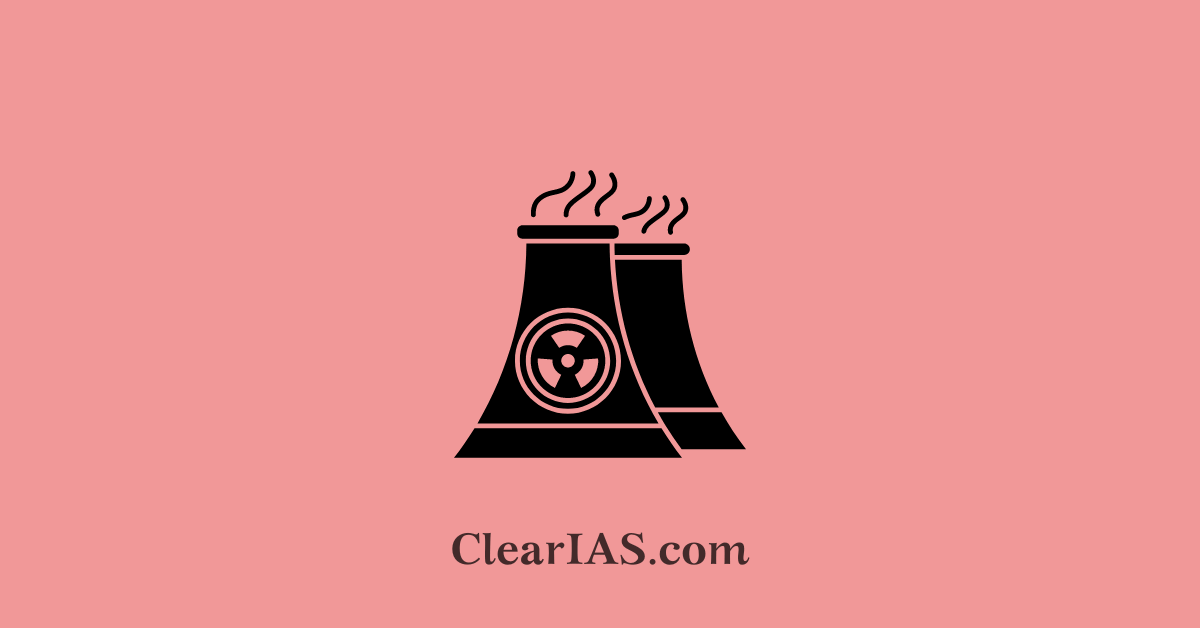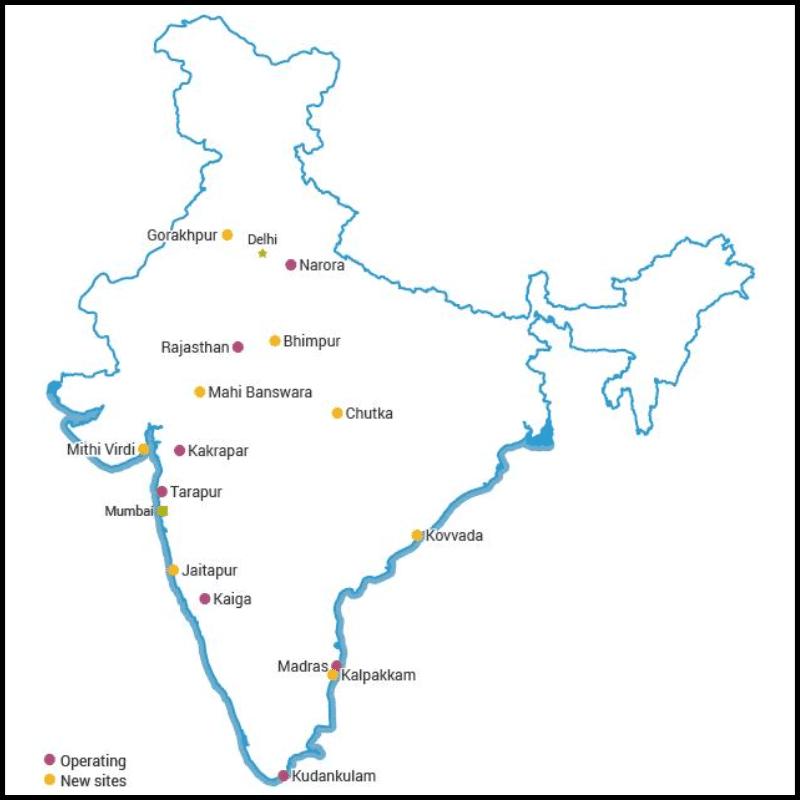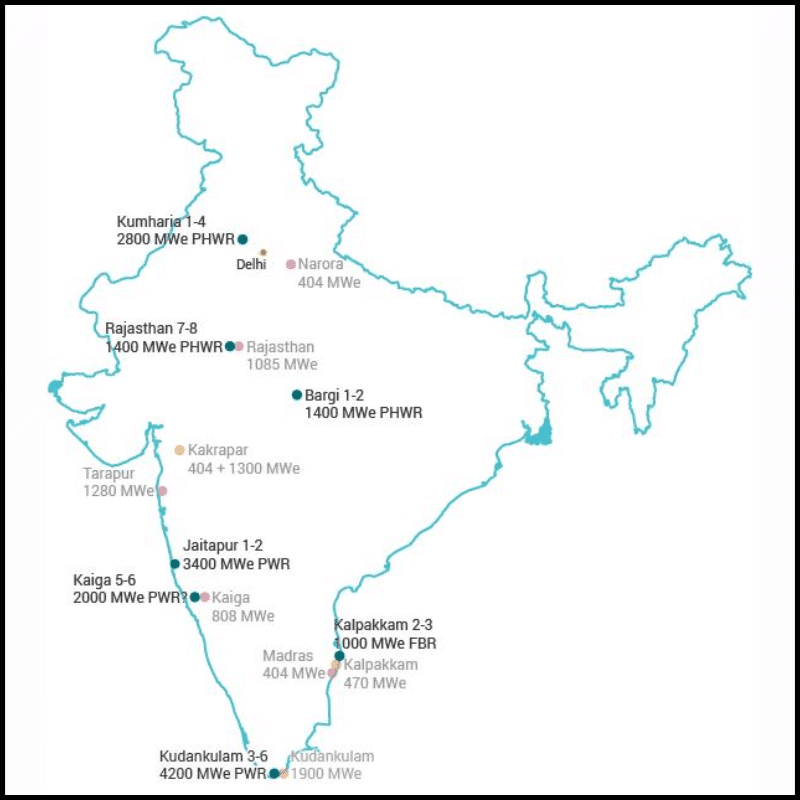
India’s nuclear future is poised at a critical juncture, balancing the need for energy security, environmental sustainability, and geopolitical considerations. Read further to understand the global nuclear race and India’s stand.
Nuclear concerns are on the rise once again across the world. Nuclear deterrence tactics are being reexamined in light of the conflict between Russia and Ukraine and China’s ambition. Talk of France and Britain working together and bolstering NATO‘s nuclear capabilities is becoming increasingly prevalent throughout Europe.
Similarly, Arab countries are being pushed towards atomic capabilities by concerns over Iran’s nuclear programme. The development of robotic weapons and artificial intelligence also raises concerns over the mechanisation of nuclear decision-making.
As a country with burgeoning energy demands and commitments to reducing carbon emissions, nuclear power plays a pivotal role in India’s energy strategy as well as strengthening its stand among the ever-threatening nuclear powers.
Here’s an in-depth look at India’s nuclear future, covering its current status, plans, challenges, and strategic implications.
India’s Nuclear Program: Current status

- Nuclear Power Capacity: As of now, India has 22 operational nuclear reactors with a total installed capacity of about 6,780 MW. These reactors are spread across several states, including Tamil Nadu, Maharashtra, Gujarat, and Rajasthan.
- Fuel Cycle: India operates a closed fuel cycle, involving uranium mining, fuel fabrication, reactor operation, reprocessing of spent fuel, and waste management. This cycle is aimed at maximizing the utilization of nuclear material and minimizing waste.
- Technology and Reactor Types: India primarily uses Pressurized Heavy Water Reactors (PHWRs) and has also developed indigenous technology such as the Prototype Fast Breeder Reactor (PFBR).
- The country has ambitious plans to deploy Thorium-based reactors as part of its three-stage nuclear program, leveraging its vast Thorium reserves.
India’s nuclear future

- Expansion of Nuclear Capacity: The Indian government aims to increase its nuclear power capacity to 22,480 MW by 2031, with nuclear accounting for nearly 9% of India’s electricity by 2047.
- This involves the construction of new reactors, including Light Water Reactors (LWRs) and Fast Breeder Reactors (FBRs).
- New Projects: Several new nuclear projects are in the pipeline, including the Kudankulam Nuclear Power Plant (in collaboration with Russia) and the Jaitapur Nuclear Power Project (planned with French collaboration).
- Indigenous Development: India continues to focus on the development of its indigenous Advanced Heavy Water Reactor (AHWR) and the Fast Breeder Test Reactor (FBTR) to establish self-reliant technology and infrastructure.
- International Collaborations: India has signed nuclear cooperation agreements with several countries, including the United States, Russia, France, and Japan. These agreements facilitate technology transfer, fuel supply, and collaborative research.
Challenges Facing India’s Nuclear Future
Regulatory and Safety Concerns:
- Ensuring the highest standards of safety and regulatory compliance is paramount, especially in the wake of global nuclear accidents like Fukushima.
- The Atomic Energy Regulatory Board (AERB) oversees nuclear safety in India, but there is a need for continuous enhancement of regulatory frameworks and practices.
Public Acceptance and Environmental Impact:
- Public opposition and environmental concerns can pose significant challenges to the expansion of nuclear facilities. Ensuring transparent communication and robust environmental impact assessments are crucial.
Technological and Financial Constraints:
- Developing and maintaining advanced nuclear technology is capital-intensive. Securing sufficient investment and managing the financial viability of nuclear projects are ongoing challenges.
Nuclear Fuel Supply:
- While India has substantial Thorium reserves, it relies on imported Uranium. Ensuring a stable supply of nuclear fuel through international agreements and indigenous development is essential for the sustainability of India’s nuclear program.
Strategic Implications
- Energy Security: Expanding nuclear capacity will significantly contribute to India’s energy security by providing a stable and reliable source of power, reducing dependence on fossil fuels, and mitigating the impact of volatile global energy markets.
- Climate Change Mitigation: Nuclear power, as a low-carbon energy source, aligns with India’s commitments under the Paris Agreement to reduce greenhouse gas emissions. Expanding nuclear energy can help India achieve its climate goals by reducing its carbon footprint and promoting sustainable development.
- Geopolitical Influence: India’s nuclear program enhances its geopolitical stature by fostering strategic partnerships and technological collaborations with leading global powers. This can bolster India’s influence in international forums and negotiations.
- Technological Advancement: Investing in nuclear technology drives innovation and advances in related fields such as materials science, engineering, and safety protocols. It also enhances the country’s scientific and technical workforce.
Key Initiatives for Future
- Three-Stage Nuclear Program:
- Stage 1: Utilizes natural uranium in PHWRs to generate electricity and produce plutonium.
- Stage 2: Involves the use of plutonium in Fast Breeder Reactors (FBRs) to breed more plutonium and thorium-based U-233.
- Stage 3: Focuses on Advanced Heavy Water Reactors (AHWRs) using thorium and U-233 to achieve a sustainable nuclear fuel cycle.
- Thorium Utilization:
- India’s vast thorium reserves offer a unique opportunity to develop a long-term, sustainable nuclear fuel cycle. Thorium-based reactors are expected to be safer and produce less long-lived radioactive waste.
- Global Nuclear Partnerships:
- Strengthening international partnerships and securing nuclear fuel supplies through agreements with countries like Canada, Kazakhstan, and Australia.
Prototype Fast Breeder Reactor (PFBR)
India’s Indigenous Prototype Fast Breeder Reactor (PFBR) and its abundant thorium reserves are indeed pivotal to the country’s future energy security.
The PFBR, located at the Indira Gandhi Centre for Atomic Research (IGCAR) in Kalpakkam, Tamil Nadu, is a key project in India’s nuclear energy program. It represents the second stage of India’s three-stage nuclear power program.
- The PFBR uses a mixed oxide (MOX) fuel, composed of plutonium-239 and uranium-238. It is designed to produce more fuel than it consumes by converting uranium-238 into plutonium-239, which can then be used as fuel.
- Capacity: The PFBR has a design capacity of 500 MWe (megawatts electric), with plans for future breeders of higher capacity.
- Breeding Ratio: The reactor is designed to achieve a breeding ratio greater than one, meaning it produces more fissile material than it consumes. This is crucial for the sustainability of nuclear fuel.
- Safety: Fast Breeder Reactors (FBRs) operate at higher temperatures and require advanced safety mechanisms. The PFBR includes features like passive cooling and a robust containment structure to enhance safety.
Role in Energy Security
- Fuel Utilization: The PFBR can significantly extend the life of uranium resources by converting fertile uranium-238 into fissile plutonium-239, effectively increasing the availability of nuclear fuel.
- Reduced Dependency on Uranium: By breeding plutonium, the PFBR reduces India’s reliance on imported uranium, contributing to energy self-sufficiency.
- Technological Leadership: The successful operation of the PFBR places India at the forefront of advanced nuclear technology, showcasing its capability to develop and manage complex nuclear systems.
Thorium Reserves in India
India possesses one of the largest thorium reserves in the world, estimated at around 360,000 tonnes. Thorium is not fissile on its own but can be converted into fissile uranium-233 in a reactor.
Utilization in Nuclear Power:
- Three-Stage Nuclear Power Program
- Advanced Heavy Water Reactor (AHWR): The AHWR is designed to use thorium and U-233, providing a bridge to large-scale utilization of thorium. This reactor represents the third stage of India’s nuclear program.
Advantages of Thorium
- Abundance: Thorium is more abundant than uranium and widely available in India, providing a long-term resource for nuclear energy.
- Safety: Thorium-based reactors have inherent safety features, including lower production of long-lived radioactive waste and greater resistance to proliferation.
- Environmental Benefits: Using thorium reduces the environmental impact of nuclear waste, as it produces less long-lived actinides compared to uranium-based fuel cycles.
Significance of PFBR
- Energy Security: The combination of PFBR technology and thorium reserves can provide a stable and long-term energy supply, reducing dependency on imported fossil fuels and uranium.
- Sustainability: The closed fuel cycle, which involves reprocessing and recycling spent fuel, ensures maximum utilization of resources and minimal waste, aligning with sustainable energy practices.
- Economic Impact: Developing indigenous nuclear technology and leveraging thorium reserves can boost the domestic economy, create jobs, and promote technological advancements.
- Geopolitical Influence: India’s leadership in thorium-based nuclear technology can enhance its geopolitical standing, enabling it to collaborate with other nations on advanced nuclear projects and export its technology.
In news
2025: India’s largest power generator, National Thermal Power Corporation (NTPC) Limited has signed a strategic pact with US-based Clean Core Thorium Energy (CCTE) to explore the development and deployment of advanced nuclear energy for enriched life (ANEEL), thorium-based fuel.
Advanced Nuclear Energy for Enriched Life (ANEEL)
Advanced Nuclear Energy for Enriched Life (ANEEL) is a thorium-based nuclear fuel technology developed by Clean Core Thorium Energy (CCTE). It is specifically designed for use in Pressurized Heavy Water Reactors (PHWRs), offering an innovative approach to nuclear energy generation that focuses on safety, efficiency, and sustainability.
Key Features of ANEEL:
- Thorium-Based Fuel: Utilizes thorium, an abundant element in India, as a primary fuel source. Thorium is more abundant than uranium and offers a sustainable alternative for long-term energy needs.
- Enhanced Reactor Efficiency: Improves the performance of PHWRs by leveraging thorium’s properties, such as higher thermal conductivity and stability.
- Reduced Radioactive Waste: Generates less long-lived radioactive waste compared to conventional uranium-based reactors.
- Safety Advantages: Thorium-based fuels have inherent safety benefits, including lower risk of runaway reactions.
- Non-Proliferative: Thorium fuel cycles produce minimal plutonium, reducing the risk of nuclear weapons proliferation.
Advantages of ANEEL for India:
- Energy Security: Reduces dependence on imported uranium by leveraging domestic thorium resources.
- Sustainability: Supports India’s commitment to sustainable development and low-carbon energy goals.
- Alignment with Net-Zero Goals: Advanced nuclear technology like ANEEL can contribute significantly to achieving India’s net-zero emission target by 2070.
- Economic Potential: Developing thorium-based nuclear technologies could position India as a global leader in this innovative field.
Conclusion
India’s Indigenous Prototype Fast Breeder Reactor and its abundant thorium reserves are central to the nation’s strategy for achieving energy security and sustainability.
The PFBR, by breeding more fuel than it consumes, extends the life of India’s uranium resources, while thorium provides a vast and underutilized energy resource.
Together, they promise a future where India can meet its growing energy demands sustainably and securely, reducing reliance on imports and positioning itself as a leader in advanced nuclear technology.
As these technologies mature, they will play an increasingly critical role in India’s energy landscape, driving economic growth and technological innovation.
India’s nuclear future is a crucial component of its overall energy strategy, offering a pathway to energy security, environmental sustainability, and technological advancement.
While challenges remain, including regulatory, financial, and public acceptance issues, the strategic benefits of a robust nuclear program are significant.
By leveraging its technological capabilities, natural resources, and international partnerships, India can pave the way for a sustainable and secure energy future. The continued focus on innovation, safety, and public engagement will be key to realizing the full potential of India’s nuclear ambitions.
Related articles:
-Article by Swathi Satish






Leave a Reply